- Henryk Szeryng and Charles Reiner:
Recital
- Palexa (Pelleas Distribution)
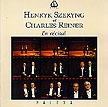 Apart from a rather
pale rendition of the Brahms Sonatensatz, this recital
presents violinist Szeryng and pianist Reiner in fine form. The
familiar warhorses on this eclectic programme include the Bach
Solo Partita in E, the Beethoven Sonata No. 7 in C
minor, and the Spanish Dance from Falla's La Vida
Breve, and some of them have been recorded better elsewhere by
the same artists. Of greater interest are the lesser known items:
Manuel Ponce's Sonata Breve, Darius Milhaud's Le
Printemps, and an electric performance of Karol Szymanowski's
Notturno e Tarantella. The big problem with this disc is the
poorly recorded sound. The concert was taped live in Pittsburgh on
December 6, 1979, and the close-miking introduces harshness in
Szeryng's usually gorgeous tone. This disc has historical interest,
but the poor sound will turn many listeners off. Alan
Horgan Apart from a rather
pale rendition of the Brahms Sonatensatz, this recital
presents violinist Szeryng and pianist Reiner in fine form. The
familiar warhorses on this eclectic programme include the Bach
Solo Partita in E, the Beethoven Sonata No. 7 in C
minor, and the Spanish Dance from Falla's La Vida
Breve, and some of them have been recorded better elsewhere by
the same artists. Of greater interest are the lesser known items:
Manuel Ponce's Sonata Breve, Darius Milhaud's Le
Printemps, and an electric performance of Karol Szymanowski's
Notturno e Tarantella. The big problem with this disc is the
poorly recorded sound. The concert was taped live in Pittsburgh on
December 6, 1979, and the close-miking introduces harshness in
Szeryng's usually gorgeous tone. This disc has historical interest,
but the poor sound will turn many listeners off. Alan
Horgan
- Mozart: Don Giovanni
- Sir Georg Solti / London Philharmonic
Orchestra
- London 455 500-2 (Polygram)
 This is Solti's second
Don Giovanni and one of the last recordings he made before
his recent death. I wish I could be more enthusiastic about the
result. The London Philharmonic does a perfectly adequate job.
Monica Groop's Zerlina provides unalloyed pleasure, effortlessly
negotiating the high tessitura. Despite minor legato problems, her
timbre is clean and pleasant. Her Masetto is Italian Roberto
Scaltriti, barely thirty but sounding much older. Sardinian bass
Mario Luperi is suitably dark and resonant as the Commendatore.
Herbert Lippert's two difficult Don Ottavio arias are competent but
not perfectly enjoyable. Michelle Pertusi's Leporello is fine on a
purely technical level, but he sounds older than the Don. He is
neither his master's victim nor accomplice, just his cowardly
shadow. At the top of this opera's food chain is Bryn Terfel's Don
Giovanni. Terfel has one of the richest, most distinctive voices in
the business. His recitative is strikingly expressive, his piano
whisperings are frighteningly erotic and his middle voice is lovely.
Only his lower range is marred by a buzzy vibrato. Unfortunately
Terfel's Don is psychologically one-dimensional, a bully with a
psychotic temper. His roaring and sadistic belly-laughs are way over
the top. Having seen Terfel live I can imagine he might make this
work on stage, but it is nerve-racking on disc. If Terfel's Don is
too strong, Renée Fleming's Donna Anna is too weak. If Anna is the
vengeful impetus behind the drama's progression, then Fleming is
much too girlish and sweet. Her anger is too belcantoish ‹ she needs
to darken her rage. In Fleming's "Or sai chi l'onore" a perceptible
vibrato in the upper notes struck me as an unwelcome vocal
development. That said, her "Non mi dir" was clear and pure. The
Donna Elvira of Ann Murray was quite good but not free from isolated
whoops, strange phrasing and whininess in "Mi tradì", of all places.
There is no single perfect Don Giovanni on the market, though
there are several fine ones (Fürtwangler, Giulini, Haitink, Davis,
Solti I, Muti, Krips). Solti II is more than a curiosity and
provides moments of memorable drama, but anyone who demands a
prolonged, polished lyrical experience will find this rough going.
Philip Anson This is Solti's second
Don Giovanni and one of the last recordings he made before
his recent death. I wish I could be more enthusiastic about the
result. The London Philharmonic does a perfectly adequate job.
Monica Groop's Zerlina provides unalloyed pleasure, effortlessly
negotiating the high tessitura. Despite minor legato problems, her
timbre is clean and pleasant. Her Masetto is Italian Roberto
Scaltriti, barely thirty but sounding much older. Sardinian bass
Mario Luperi is suitably dark and resonant as the Commendatore.
Herbert Lippert's two difficult Don Ottavio arias are competent but
not perfectly enjoyable. Michelle Pertusi's Leporello is fine on a
purely technical level, but he sounds older than the Don. He is
neither his master's victim nor accomplice, just his cowardly
shadow. At the top of this opera's food chain is Bryn Terfel's Don
Giovanni. Terfel has one of the richest, most distinctive voices in
the business. His recitative is strikingly expressive, his piano
whisperings are frighteningly erotic and his middle voice is lovely.
Only his lower range is marred by a buzzy vibrato. Unfortunately
Terfel's Don is psychologically one-dimensional, a bully with a
psychotic temper. His roaring and sadistic belly-laughs are way over
the top. Having seen Terfel live I can imagine he might make this
work on stage, but it is nerve-racking on disc. If Terfel's Don is
too strong, Renée Fleming's Donna Anna is too weak. If Anna is the
vengeful impetus behind the drama's progression, then Fleming is
much too girlish and sweet. Her anger is too belcantoish ‹ she needs
to darken her rage. In Fleming's "Or sai chi l'onore" a perceptible
vibrato in the upper notes struck me as an unwelcome vocal
development. That said, her "Non mi dir" was clear and pure. The
Donna Elvira of Ann Murray was quite good but not free from isolated
whoops, strange phrasing and whininess in "Mi tradì", of all places.
There is no single perfect Don Giovanni on the market, though
there are several fine ones (Fürtwangler, Giulini, Haitink, Davis,
Solti I, Muti, Krips). Solti II is more than a curiosity and
provides moments of memorable drama, but anyone who demands a
prolonged, polished lyrical experience will find this rough going.
Philip Anson
- Héritage du XXe siècle / A twentieth
century legacy.
- Francine Voyer, flûte. Carmen Picard,
piano
- Série classiques UMMUS (UMM 311)
-
-
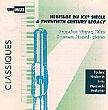 C'est à un véritable
festival de musique néo-romantique que nous convie cet excellent
disque enregistré à la Salle Claude-Champagne au mois de janvier
dernier. En effet, Mesdames Voyer et Picard nous offrent ici des
oeuvres de Poulenc (Sonate, 1957), de Hindemith (Sonate
für Flöte und Klavier, 1936), de Hétu (Quatre Pièces Op.
10, 1965), de Muczynski (Sonata for flute and piano Op.
14, 1961) et finalement de Prokofiev (Sonate Op. 94,
1943). La principale caractéristique de ce disque est de
proposer un assortiment de cinq esthétiques musicales qui, bien
que fort différentes, se rejoignent quant à la forme. À ce
chapitre, on peut dire mission accomplie si l'on considère la
rigueur avec laquelle semble avoir été traité le caractère
distinct de chacun des compositeurs en présence. L'équilibre
sonore entre les deux instruments témoigne de la grande complicité
qui règne au sein de ce duo chevronné. De plus, les deux
interprètes démontrent un sens inné pour le phrasé musical ainsi
que pour les contrastes subtils que requièrent ces pièces. Une
perle qui plaira sûrement aux amateurs de musique du XXe siècle.
Jean-Claude Thériault C'est à un véritable
festival de musique néo-romantique que nous convie cet excellent
disque enregistré à la Salle Claude-Champagne au mois de janvier
dernier. En effet, Mesdames Voyer et Picard nous offrent ici des
oeuvres de Poulenc (Sonate, 1957), de Hindemith (Sonate
für Flöte und Klavier, 1936), de Hétu (Quatre Pièces Op.
10, 1965), de Muczynski (Sonata for flute and piano Op.
14, 1961) et finalement de Prokofiev (Sonate Op. 94,
1943). La principale caractéristique de ce disque est de
proposer un assortiment de cinq esthétiques musicales qui, bien
que fort différentes, se rejoignent quant à la forme. À ce
chapitre, on peut dire mission accomplie si l'on considère la
rigueur avec laquelle semble avoir été traité le caractère
distinct de chacun des compositeurs en présence. L'équilibre
sonore entre les deux instruments témoigne de la grande complicité
qui règne au sein de ce duo chevronné. De plus, les deux
interprètes démontrent un sens inné pour le phrasé musical ainsi
que pour les contrastes subtils que requièrent ces pièces. Une
perle qui plaira sûrement aux amateurs de musique du XXe siècle.
Jean-Claude Thériault
-
-
- Vierne, Ropartz, Messiaen
- Anne Robert, violon
- Sylviane Deferne, piano
- CBC Records MVCD1110 (Denon)
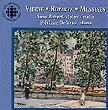 On peut affirmer sans
se tromper que le programme que nous propose CBC Records est des
plus audacieux. En effet, la Sonate en sol mineur, Op. 23 de
Louis Vierne qui, soit dit en passant renferme des passages lyriques
d'une beauté exquise, n'en reste pas moins une oeuvre négligée du
répertoire du XXe siècle. L'interprétation que nous en offre le duo
Robert-Deferne est un petit bijou d'intelligence. La 3e Sonate en
la majeur de Joseph-Guy Ropartz, autre mal aimé de notre siècle,
est elle aussi un coup d'audace de la part de la CBC. Très chantante
et même parfois mélancolique (c'est le cas dans le troisième
mouvement), cette sonate est remplie de merveilleuses idées
musicales et de formules rythmiques fort
intéressantes. On peut affirmer sans
se tromper que le programme que nous propose CBC Records est des
plus audacieux. En effet, la Sonate en sol mineur, Op. 23 de
Louis Vierne qui, soit dit en passant renferme des passages lyriques
d'une beauté exquise, n'en reste pas moins une oeuvre négligée du
répertoire du XXe siècle. L'interprétation que nous en offre le duo
Robert-Deferne est un petit bijou d'intelligence. La 3e Sonate en
la majeur de Joseph-Guy Ropartz, autre mal aimé de notre siècle,
est elle aussi un coup d'audace de la part de la CBC. Très chantante
et même parfois mélancolique (c'est le cas dans le troisième
mouvement), cette sonate est remplie de merveilleuses idées
musicales et de formules rythmiques fort
intéressantes.
Le Thème et variations pour
piano et violon d'Olivier Messiaen est quant à lui un très bel
exemple de ce qu'il est possible d'accomplir à partir d'un simple
énoncé musical. Le dialogue qui se développe entre les deux
instruments gagne en intensité et en rapidité au fil des variations,
créant ainsi une ambiance ambiguë de stabilité et de
changement. Jean-Claude Thériault
- Schubert: String Quartet No. 15 and
Quartettsatz in C minor
- Carmina Quartet
- Denon CO-18015 (Denon)
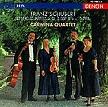 Schubert's familiar
Quartettsatz is coupled with the great G major
Quartet, one of the pinnacles of the entire chamber music
literature. The latter is almost symphonic in its conception,
testing the musicians' technical and emotional limits. The Carmina
Quartet gives deeply committed and vigorous accounts of both these
great works. While the youngish Swiss ensemble lacks some of the
polish of the Alban Berg or Tokyo Quartets, their wholehearted
involvement is most compelling. Denon's excellent sound is almost
too clear. Individual string tone tends to suffer from this
kind of microscopic scrutiny. Warmly recommended. Alan
Horgan Schubert's familiar
Quartettsatz is coupled with the great G major
Quartet, one of the pinnacles of the entire chamber music
literature. The latter is almost symphonic in its conception,
testing the musicians' technical and emotional limits. The Carmina
Quartet gives deeply committed and vigorous accounts of both these
great works. While the youngish Swiss ensemble lacks some of the
polish of the Alban Berg or Tokyo Quartets, their wholehearted
involvement is most compelling. Denon's excellent sound is almost
too clear. Individual string tone tends to suffer from this
kind of microscopic scrutiny. Warmly recommended. Alan
Horgan
The Carmina Quartet
performs on Monday, November 10, 1997 at 8 p.m. at Théâtre
Maisonneuve. Info: Pro Musica 845-0532.
- Janácek: Hradcany Songs and Other
Choruses
- Prague Philharmonic Choir/ Dir. Josef
Veselka
- Czech Philharmonic Orchestra
- Supraphon SU 3295-2211 (SRI)
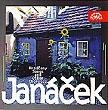 This compilation of
non-operatic choruses for female voice (many written for women's
groups, in the absence of men during World War I) is distilled
Janácek - folkish, lyrical, strident and succulent. The eighteen
dreamy, spooky Nursery Rhymes (1927) employ a Mahlerian tonal
palette. The Puccini-esque Kaspar Rucky (1916) is the banshee
soprano ballad of a suicide's ghost. Wolf Tracks (1916) adds
a tenor voice to a violent narrative of rural adultery. Two
technical problems with this fascinating treasury of melodic and
dramatic invention: a) brief notes but no song texts, and b) rough
editing including many audible splices and uneven recording (AAD,
1972 &1977) with occasional distortion when full chorus sings
high fortissimo. Philip Anson This compilation of
non-operatic choruses for female voice (many written for women's
groups, in the absence of men during World War I) is distilled
Janácek - folkish, lyrical, strident and succulent. The eighteen
dreamy, spooky Nursery Rhymes (1927) employ a Mahlerian tonal
palette. The Puccini-esque Kaspar Rucky (1916) is the banshee
soprano ballad of a suicide's ghost. Wolf Tracks (1916) adds
a tenor voice to a violent narrative of rural adultery. Two
technical problems with this fascinating treasury of melodic and
dramatic invention: a) brief notes but no song texts, and b) rough
editing including many audible splices and uneven recording (AAD,
1972 &1977) with occasional distortion when full chorus sings
high fortissimo. Philip Anson
- Gubaidulina: Alleluia
- Górecki: Miserere
- Danish National Radio Choir and Symphony
Orchestra
- Chandos 9523 (SRI)
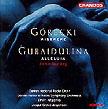 This is a strange
coupling of two thematically very different works: a rejoicing
Alleluia on one hand and a sad, imploring Miserere on
the other. The intense themes of Gorecki's Miserere are well
expressed, building from apparent calm to climaxes of wrenching
anguish. The danger of exaggerated sorrow is avoided, and even at
climaxes this performance has a solidity and nobility suitable to
this sincere composition. Performing with sincerity is perhaps the
greatest challenge to a musician, and conductor Jesper Grove
Jørgensen achieves this throughout, from the calm monody of the
first movement to the passion of the ninth. This disc also contains
the first recording of Sofia Gubaidulina's Alleluia. The
performance grows ponderous in the first movement due to
interminable repetition, but later on there are moments of
brilliance, particularly the piercing soprano chords in the third
movement, the dark and tumultuous sixth movement, and the
crystalline tension of the final movement. As with the Górecki,
performance and recording are good. The choir has an impressive
ability to convincingly deliver widely varying styles. Highly
recommended for fans of Górecki's Third Symphony.
Jonah Lynch This is a strange
coupling of two thematically very different works: a rejoicing
Alleluia on one hand and a sad, imploring Miserere on
the other. The intense themes of Gorecki's Miserere are well
expressed, building from apparent calm to climaxes of wrenching
anguish. The danger of exaggerated sorrow is avoided, and even at
climaxes this performance has a solidity and nobility suitable to
this sincere composition. Performing with sincerity is perhaps the
greatest challenge to a musician, and conductor Jesper Grove
Jørgensen achieves this throughout, from the calm monody of the
first movement to the passion of the ninth. This disc also contains
the first recording of Sofia Gubaidulina's Alleluia. The
performance grows ponderous in the first movement due to
interminable repetition, but later on there are moments of
brilliance, particularly the piercing soprano chords in the third
movement, the dark and tumultuous sixth movement, and the
crystalline tension of the final movement. As with the Górecki,
performance and recording are good. The choir has an impressive
ability to convincingly deliver widely varying styles. Highly
recommended for fans of Górecki's Third Symphony.
Jonah Lynch
- Chopin: Preludes Op. 28, Barcarole Op. 60,
Sonata No. 2 Op. 35
- Andrei Nikolsky, piano
- Arte Nova (BMG)
This Chopin disc from Arte Nova Classics, BMG's new super-budget
label, is worth a rave. From the first prelude, Russian pianist
Andrei Nikolsky's understanding of Chopin's musical idiom is
apparent. His use of tempo rubato is generous and convincing,
reminiscent of Dinu Lipati's interpretations. Nikolsky interprets
Chopin's dynamic markings at the level of musical intensity rather
than just referring to the strength of attack, and his ability to
bring out parallel motifs reveals the composition's rich, intricate
structure. Nikolsky's 24 Preludes are musical poems, each
expressing a shade of melancholy, joy or passion. The intimate
performance is heartfelt, colourful and intense without preciosity.
Full drama is unleashed in the intense first and second movements of
the Op. 35. The Marche funèbre movement is expressive and the
Sonata ends with a difficult triplet Presto, which
Nikolsky enlivens with rare musicality. Also recommended in the Arte
Nova series is Alfredo Perl's Beethoven Piano Sonatas Op. 2.
The piano is closely miked and Perl uses the sustaining pedal
throughout, but his Romantic-style performance is a good listen.
Martin Kamela
- Giaches de Wert: Madrigali a cinque
voci
- Cantus Cölln/ Dir. Konrad Junghänel
- harmonia mundi HMC 901621 (SRI)
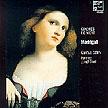 This selection of 25 madrigals
composed between 1561 and 1595 by Antwerp-born Giaches de Wert
(1535-1596) during his residence in Mantua and Ferrara (immediately
preceding Monteverdi) will be of great interest to madrigal buffs.
The traditional pastoral and amorous themes of the reluctant
mistress, the suffering lover, flowers, kisses, tears, sighs,
groans, etcetera, are predictable but de Wert's clever composition
makes each madrigal interesting to hear, and probably even more fun
to sing. No danger of ennui in the sprightly "Dica chi vuol", the
dignified "Dido's Lament" or the concertante pieces originally
composed for the three sixteenth-century women known as the
"Concerto delle Donne di Ferrara". Cantus Cölln (soprano, female
alto, two tenors and bass) directed by lutenist Junghägel has a
well-blended, robust sound with good solo voices. Trilingual notes
and texts complete this fine offering. Philip
Anson This selection of 25 madrigals
composed between 1561 and 1595 by Antwerp-born Giaches de Wert
(1535-1596) during his residence in Mantua and Ferrara (immediately
preceding Monteverdi) will be of great interest to madrigal buffs.
The traditional pastoral and amorous themes of the reluctant
mistress, the suffering lover, flowers, kisses, tears, sighs,
groans, etcetera, are predictable but de Wert's clever composition
makes each madrigal interesting to hear, and probably even more fun
to sing. No danger of ennui in the sprightly "Dica chi vuol", the
dignified "Dido's Lament" or the concertante pieces originally
composed for the three sixteenth-century women known as the
"Concerto delle Donne di Ferrara". Cantus Cölln (soprano, female
alto, two tenors and bass) directed by lutenist Junghägel has a
well-blended, robust sound with good solo voices. Trilingual notes
and texts complete this fine offering. Philip
Anson
- Federico Mompou: Piano Works
- Stephen Hough, piano
- Hyperion CDA66963 (SRI)
Here is an exquisite bouquet of Mompou's solo piano works
selected and played by the masterful Stephen Hough, who also wrote
the informative notes. Anyone who likes reflective, pastel-shaded
piano exercises in the style of Ravel, Debussy and above all Satie
will love Mompou. The Catalan composer spent many years in Paris and
may well be called the Spanish Satie, though his minimalistic wit
and emotion are mercifully free of Satie's sceptical irony. The
76-minute disc contains about half of Mompou's piano oeuvre,
competitive with other commercially-available compilations. Until
the re-release of the splendid 3-disc collection "Mompou Plays
Mompou" on the Ensayo label (recorded in Barcelona by the 81-year
old composer), Hough's album is a top recommendation. Philip
Anson
- Kurt Weill: "Lady in the Dark"
- Lyrics by Ira Gershwin. Book by Moss
Hart.
- Sony Masterworks Heritage MHK62869
If you like
nostalgia and Broadway musicals, you'll love this Sony Masterworks
Heritage digitally re-mastered stereo recording of Kurt Weill's
musical Lady in the Dark. The first 13 tracks are performed
by the cast of the 1963 revival including Risë Stevens, Adolph Green
and John Reardon, while the final six tracks (in my opinion the
highlight of this disc) were recorded by the inimitable Danny Kaye
to promote the original 1941 production. This means that several
songs are offered twice, but the alternative versions are so
different there is no danger you'll be bored. Sony engineering
renders these recordings better-sounding than ever. Songs like
"Jenny," "One Life to Live" and the tongue-twisting "Tchaikowsky"
and a booklet of archival photos bring a bit of Broadway into your
own living room. Allan Boss
- Violin Virtuoso
- Xue-Wei, violin; Pamela Nicholson, piano
- ASV CD WHL 2105 (SRI)
Xue-Wei enters Jascha Heifetz territory with this collection of
familiar encores, including some of the Russian master's own
arrangements. This is fine lush playing full of fascinating
inflection and good humour. Sampling Elgar's La Capricieuse
or Gershwin's "It ain't necessarily so" should convince even
sceptics. The balance between violin and piano is good and although
the microphone placement may be too distant for some tastes, the
recorded sound is quite acceptable. ASV's liner notes are barely
adequate and the cover art is a disaster, but lovers of fine
fiddling will want to savour this again and again. Alan
Horgan
- Schubert: Symphony No. 5 & No.
8
- Orchestra of the Age of Enlightenment/ Dir.
Sir Charles Mackerras
- Virgin Classics CDM 61305 (EMI)
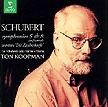 Two strikingly
different interpretations of Schubert's Symphonies No. 5 and No.
8. Sir Charles Mackerras conducts the Orchestra of the Age of
Enlightenment in a rather romantic interpretation while Ton Koopman
leads the Netherlands Radio Chamber Orchestra with more classical
reserve. Koopman's crisply articulated interpretation seems more in
character with the Mozartian Fifth Symphony than does
Mackerras' exaggerated phrasing. Their renditions of the
Unfinished Symphony are even more different. Mackerras uses a
third movement reconstructed by Brian Newbould from sketches which
purport to belong to Schubert's Eighth Symphony. Entr'acte
Music from Rosamunde D. 797 is offered as the missing final
movement because it is in the same key as the Unfinished.
Amusingly, in Erato's liner notes, David Cairns discredits this very
reconstruction. He supports his theory that Schubert's two extant
movements offer a complete story of tragedy and peaceful resolve by
pointing out that the repeated phrase at the end of the second
movement was also used by Schubert in Die Burgschaft to
accompany the words "O divine peace". Two strikingly
different interpretations of Schubert's Symphonies No. 5 and No.
8. Sir Charles Mackerras conducts the Orchestra of the Age of
Enlightenment in a rather romantic interpretation while Ton Koopman
leads the Netherlands Radio Chamber Orchestra with more classical
reserve. Koopman's crisply articulated interpretation seems more in
character with the Mozartian Fifth Symphony than does
Mackerras' exaggerated phrasing. Their renditions of the
Unfinished Symphony are even more different. Mackerras uses a
third movement reconstructed by Brian Newbould from sketches which
purport to belong to Schubert's Eighth Symphony. Entr'acte
Music from Rosamunde D. 797 is offered as the missing final
movement because it is in the same key as the Unfinished.
Amusingly, in Erato's liner notes, David Cairns discredits this very
reconstruction. He supports his theory that Schubert's two extant
movements offer a complete story of tragedy and peaceful resolve by
pointing out that the repeated phrase at the end of the second
movement was also used by Schubert in Die Burgschaft to
accompany the words "O divine peace".
- Schubert: Symphony No. 5 & No.
8
- Netherlands Radio Chamber Orchestra/ Dir. Ton
Koopman
- Erato (Warner)
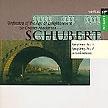 There is no denying that
Koopman achieves an exquisitely phrased description of inescapable
tragedy, resolved in the second movement with tempered climaxes and
an ultimate calm. Mackerras leads a much faster first movement and
his rendition of the second movement has a more violent character,
less a conclusion than a continuation toward two more movements. In
my opinion the Newbould scoring is obviously not Schubert and it is
also doubtful that the Rosamunde music belongs here. Both the
Mackerras and Koopman performances are compromised by scratchy
violins, but I prefer the character of the Erato to that of the
somewhat contrived and uneven Virgin recording.
Jonah
Lynch There is no denying that
Koopman achieves an exquisitely phrased description of inescapable
tragedy, resolved in the second movement with tempered climaxes and
an ultimate calm. Mackerras leads a much faster first movement and
his rendition of the second movement has a more violent character,
less a conclusion than a continuation toward two more movements. In
my opinion the Newbould scoring is obviously not Schubert and it is
also doubtful that the Rosamunde music belongs here. Both the
Mackerras and Koopman performances are compromised by scratchy
violins, but I prefer the character of the Erato to that of the
somewhat contrived and uneven Virgin recording.
Jonah
Lynch
|


